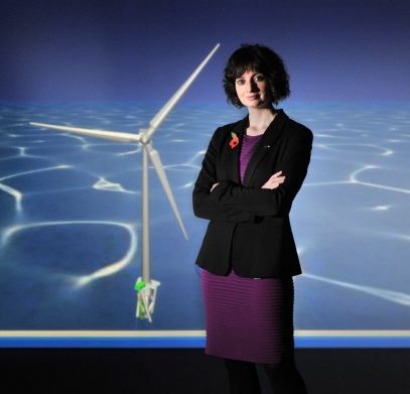
The 3D cave will be located in the Hull Immersive Visualisation Environment (HIVE) at the University’s Department of Computer Science, and is part of the multimillion-pound investment in renewables led by CASS, the University’s business facing renewable energy and low carbon hub. HIVE has been awarded £240,000 Higher Education Funding Council for England cash through CASS to develop the two-year project, which will also see the strengthening of the partnerships between the University and industry with a view to commercialisation and generating income. The 3D ‘cave’ is due to be installed in January 2013.
“The aim is to offer a training service to industry and wind farm engineers to equip people with skills and support continuing professional development in the sector with greatly reduced risks and costs” said HIVE Coordinator Emma-Jane Alexander. “The main aspect of the project is the 3D cave which will place people in an enclosed, constrained environment in which they have screens in front, to their sides and below them. This virtual space allows us to simulate the journey to an offshore platform via specialist vessel for instance, or prepare people for the feeling of standing on top of a wind turbine in the open sea and experience what can be a very hostile environment. We will also be able to simulate the different weather conditions and sea states that engineers and transport operators will face.”
The challenge of creating a uniquely interactive 3D space is complex and will be developed by a team of specialist software developers employed specifically for the project led by the University’s Simulation and Visualisation Research Group. As well as using a 3D cave, the project will also seek to simulate the winching experience to and from turbine by helicopter, using a head mounted display.
The cave will also be used to provide young people with an insight into this type of engineering.
“This is exciting technology and will be an inspiring experience” Emma-Added. “In addition to training for industry we will be able to show schoolchildren what it’s like to be wind turbine engineer. The offshore environment is not suitable for a work experience students and this solution will allow users to practise and play without the dangers
faced in the real world.”
According to Professor Stephanie Haywood, director of CASS, the project has real potential and is genuinely innovative. The university expects to further develop their range of industry partners over the course of the next few years and companies that can provide the project with CAD data are of particular interest.
Further information:

